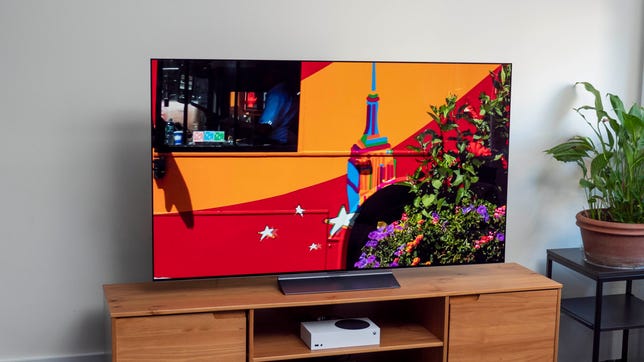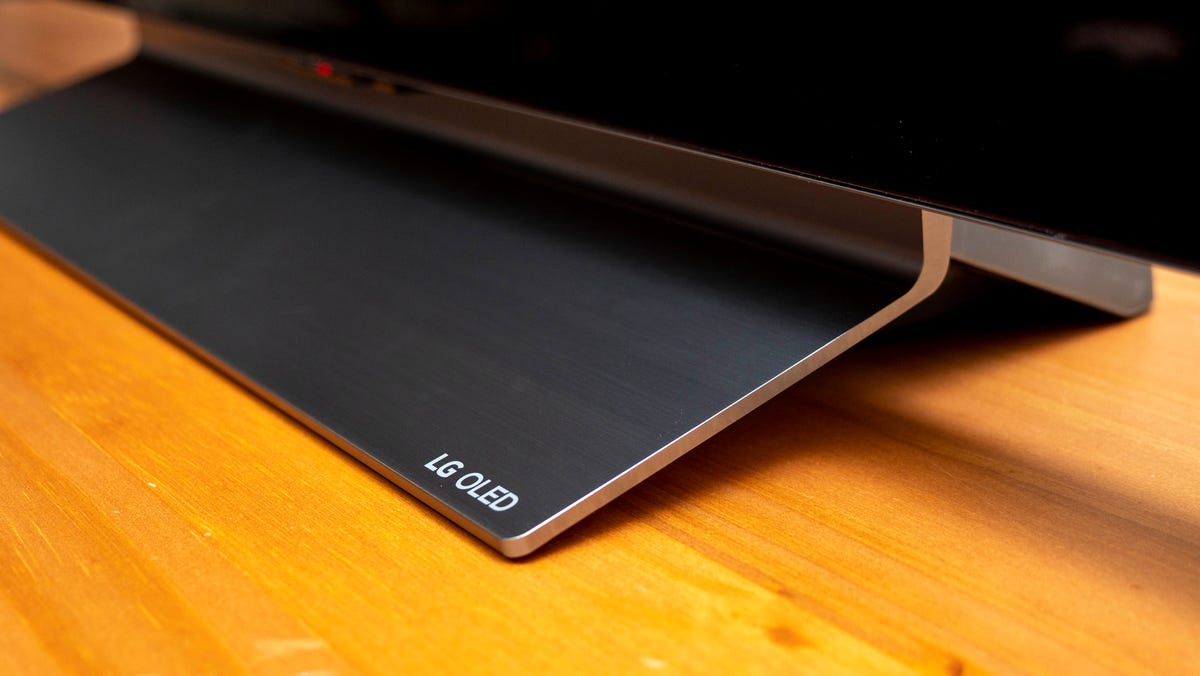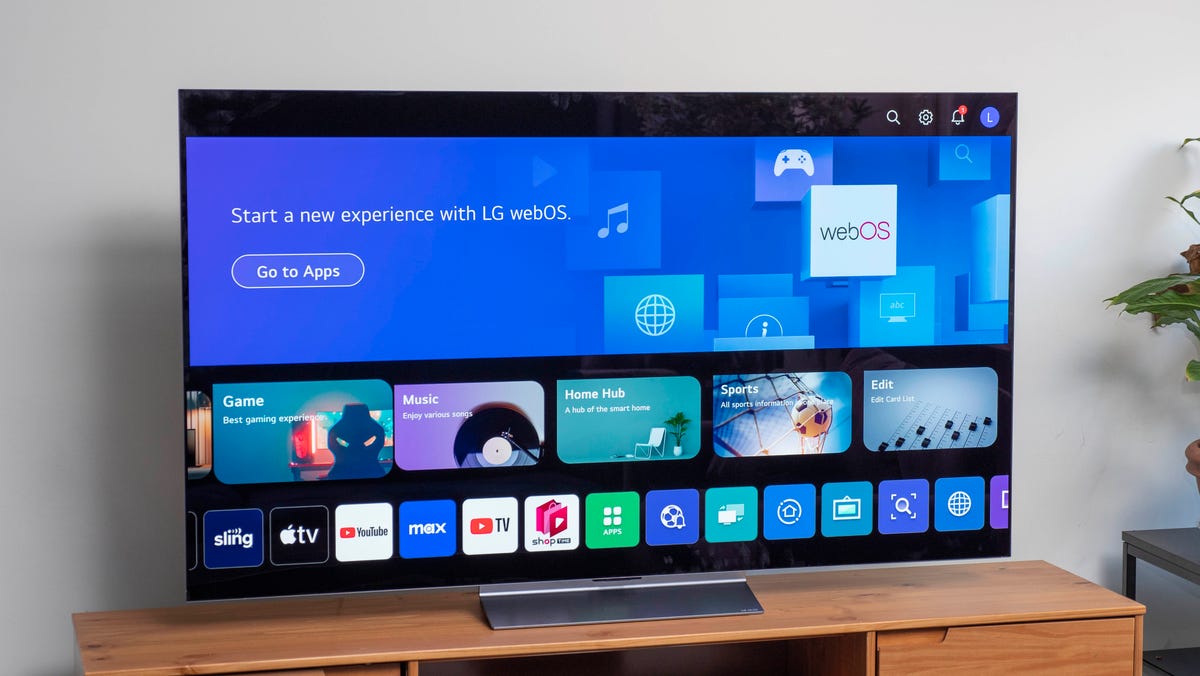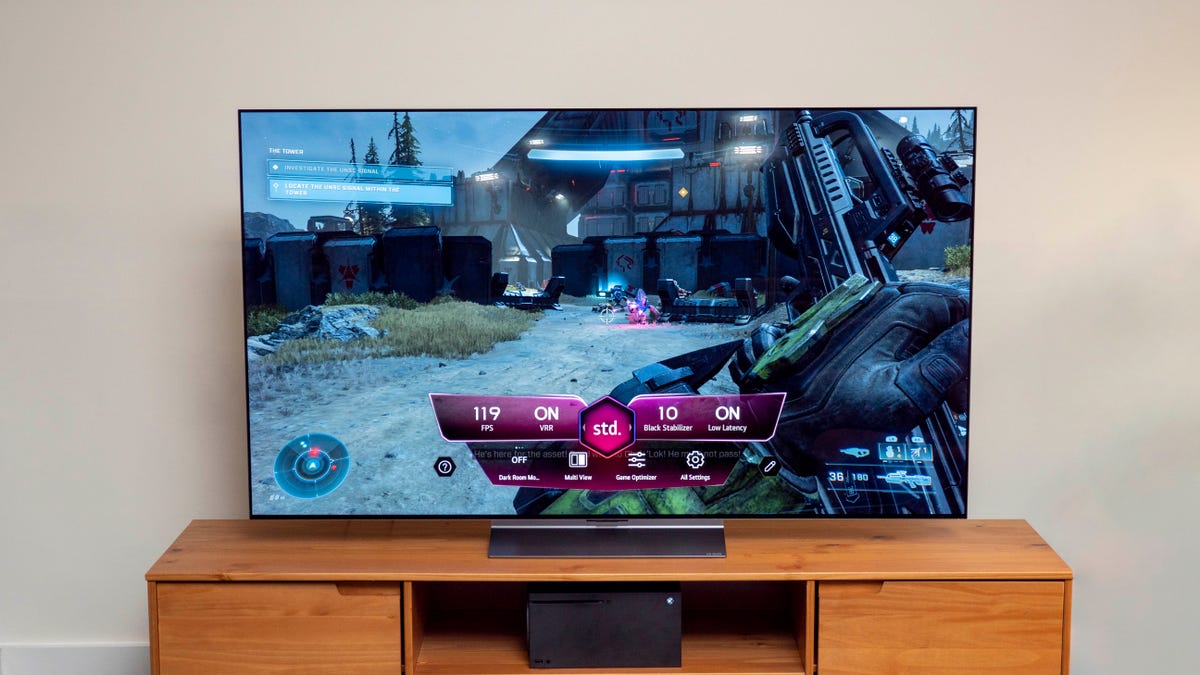
Like
- Better picture quality than any non-OLED TV we’ve tested
- Superior contrast and off-angle image
- Best-in-class gaming features
- Sleek styling with ultralight, thin panel
Don’t like
- Expensive
- Not as bright as higher-end OLED TVs
- No major improvements over the C2 from 2022
OLED TVs routinely deliver the best pictures money can buy, and in my tests over the years LG’s “C” series consistently emerges as the best TV for most high-end shoppers, combining that great picture with a not-too-crazy price. The C3 faces strong competition from Samsung, which has its own pair of OLED TVs now, as well as from LG itself, which finally gave the more-expensive G3 a marked bump up in image quality.
For this review I compared three LG OLEDs — the C3, the G3 and the C2 from last year — as well as the Samsung S95C and the Sony A80L OLED TVs side-by-side in my lab at CNET. The C3 held its own, despite looking dimmer next to the G3 and the Samsung (which both cost hundreds more). If the price difference between those two and the C3 no big deal to you, go ahead and splurge. For most people, however, it’s still not worth paying extra for anything better than the LG C3.
And right now I’d argue the best deal on a high-end TV is still the LG C2 from 2022, not the C3. Going with last year’s LG OLED saves you another few hundred bucks and the two TVs were basically indistinguishable in features, design and image quality in my tests. The C2 will sell out over the summer and heading into the TV buying season this fall, while the C3 will drop in price, but if you want a high-end TV right now, grab a C2.

Sleek and familiar, in a good way
The similarities between the C3 and the C2 from last year start with design. From the minimalist panels to the stands to the backsides, the two looked identical to my eye in CNET’s TV lab. That’s not a bad thing; both are sleek TVs and I continue to appreciate the nearly all-picture look.
The “C” also remains one of the lightest TVs on the market thanks to carbon-fiber construction — the 65-inch C3 weighs the same as the C2, just 41 pounds with a stand, making it easy to lift onto furniture or the wall. It’s also more efficient to ship. The simple center stand has a small footprint.
LG kept the same remote, unfortunately. In my old age I’ve grown easily annoyed by too many buttons, and I much prefer the streamlined, simple layout of Samsung and Roku/TCL remotes, for example. As always, you can wave LG’s remote around to move the cursor or scroll quickly through menus with the built-in wheel.

I think most people using this high-end TV should just connect an external streaming device, like Roku or Apple TV, and avoid using LG’s system altogether.
The C3 also has a couple notable features LG debuted last year, namely a multiview mode that puts two images side-by-side — which remains limited and can’t show two HDMI sources — and the always-ready screen saver that can show clocks, art and other widgets when the TV is turned “off.” Elements of the latter move around the screen to reduce the possibility of burn-in.
Here’s where I remind you that, like all OLED TVs, the C3 is more subject to both temporary and permanent image retention, also known as burn-in, than LCD-based TVs. The risk is small, which is why I don’t consider burn-in a reason for most people to avoid buying an OLED TV. Check out our guide to OLED burn-in for more.
Watch this: Go Behind the Scenes at CNET’s TV Testing Lab
04:34
TV and movies: Comparing the C3 to the Sony, using the snowy nature scenes from the Spears and Munsil test disc, the two looked similar. The C3 did appear a bit brighter than the Sony when I chose the latter’s (default) Graduation Preferred tone mapping setting, but switching to Brightness Preferred evened the playing field and made them appear nearly equally bright. I liked the look of Gradation better, however, and I’d give the nod to the C3 for being able to deliver a slightly more impactful overall image in default settings.

Gaming: The C3, like the C2 before it, is an excellent gaming TV and LG hasn’t done much to change it. I still love all the options in the Game Optimizer menu, which gathers all of the gaming settings in one place and verifies refresh rate, VRR status and more at a glance. I also appreciated the ability to edit the gaming dashboard to swap in more status indicators (resolution, Dolby Atmos and so on), but I’m pretty nerdy like that.
The Dark Room mode is designed to reduce eye fatigue but it also dulls the image so I’d avoid using it unless you need to. Among the various gaming image modes I liked Standard best for most games with its balance of shadow detail and contrast. FPS is best if you want more visibility into shadows, or you can just crank the Black Stabilizer control up (at the expense of a washed-out image).
Buried within Game Optimizer is another setting labeled “Reduce input delay (input lag)” with two options, Standard and Boost. The former, which is the default for any game, serves up an excellent input lag result similar to past LG OLED models: just 13.5ms for both 1080p and 4K HDR sources. Engaging Boost cuts lag even further, to just under 10ms for both. The catch is that Boost is only available for 60Hz sources, so you can’t use it with 120Hz games or VRR. And no, I don’t think many humans would notice the extra 3ms of lag.
As with most TVs, the brightest mode for HDR and SDR (Vivid on the C3) is horribly inaccurate. For the accurate results listed above, I used ISF Expert Bright picture mode (Peak Brightness: High) for SDR and Filmmaker mode for HDR. I recommend C3 owners do the same to get good color in bright rooms. Note that with SDR, you’ll need to disable the Auto Energy Saving setting (Support > Energy Saving > Energy Saving Step > Off) to get full brightness.
The anti-reflective screen of the C3 is very good, but the Samsung and especially the G3 did a better job deadening bright reflections in the room. The C3 did have a darker overall finish than either one, which led to slightly more pop and contrast, but the difference was minimal. Meanwhile the C3 was better than the Sony at dimming reflections, which combined with the Sony’s slightly dimmer image led to better performance in bright rooms for the C3.
Uniformity and viewing angle: Like all OLEDs I’ve tested the C3 was exemplary in this area compared to LCD-based TVs, with no significant brightness or color variations across the screen and nearly perfect image quality from off-angle. From extreme angles I did notice that the G3 was better, however — the C3 introduced a slight purplish hue at extreme off-angles, while color on the G3 remained true.
See How We Test TVs for more details.
Portrait Displays Calman calibration software was used in this review.


